Naples and Paris share a checkered history, one bound by Catholicism, pastry, and a centuries-old artistic exchange—and fractured by conflict and Napoleonic occupation. Its principal art institutions, however, are getting along famously.
The Capodimonte Museum has just sent 70 Renaissance masterworks to get cozy with period counterparts from the Louvre’s collection. It’s a six-month show, one whose opening saw the French and Italian presidents in attendance, and the Louvre’s director, Laurence des Cars, joyously declare “it’s Neapolitan season.”
“Naples in Paris”, which is set to run through January 24, 2024, is being billed as the largest-ever exhibition focused on the Italian Renaissance. It may well be and, even if size isn’t everything, it’s a well-curated affair. All the great Italian painters are present and accounted for—Michelangelo, Massacio, Raphael Caravaggio, Bellini, Titian, Artemisia Gentileschi and more—with Capodimonte filling in the gaps in the Louvre’s inestimable collection (since the 17th-century French Kings Louis III and XIV preferred the Venetian and Roman schools over the Neapolitan).

Caravaggio, The Flagellation (1607). Image: courtesy Capodimonte.
It’s a remarkable and rare collaboration between two vast European museums. Though, with the former Bourbon royal palace undergoing major renovations through 2024, “Naples in Paris” has come about more through pragmatism than fraternal love.
Sylvain Bellenger, Capodimonte’s director, is also hoping associating with the world’s most famous museum might draw attention to the Naples institution. “Many visitors will already be familiar with some of the masterpieces in the Capodimonte collection,” Bellenger said in a statement, but the museum is “still unknown by the public at large” since most tourists head to Pompeii and Herculaneum instead. Maybe this grand outing will do the trick.
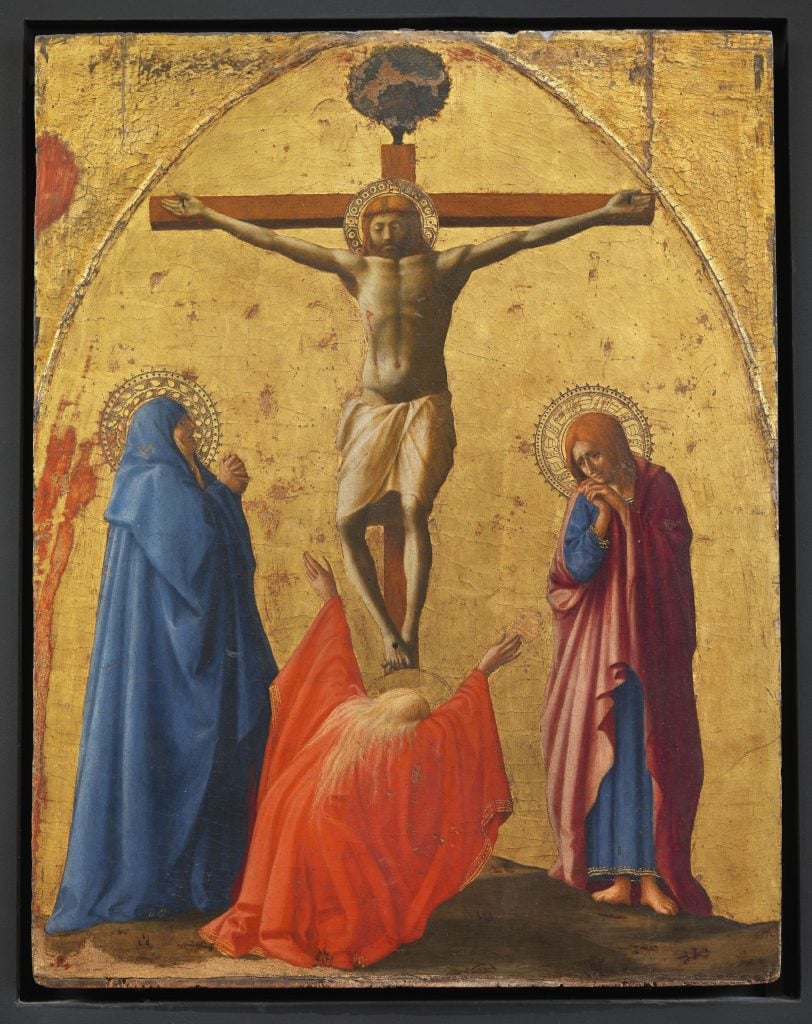
Massacio, La Crucifixion (1426). Courtesy: Capodimonte
The exhibition is spread across three separate spaces inside the former seat of the French monarchy. The Grande Gallerie, as the name suggests, makes the biggest statement. Thirty-one Capodimonte paintings are interwoven with the Louvre’s works by Titian, Caravaggio, and Guido Reni. Standouts are Massacio’s The Crucifixion, a work backed in brilliant gold that brings the viewer to the level of Mary Magdalene, who swoons at the feet of Jesus, her hands contorted. Differently captivating is Parmigianino’s Portrait of a Young Woman, a figure who in dress, pose, and gaze seems of an indeterminable age. To Bellenger’s point, she’s a figure we recognize, though we might not know which museum she lives in.
In the Salle de l’Horloge, the institutions turn to drawings, or cartoons, of which Capodimonte boasts more than 30,000. The most celebrated here were inherited from Fulvio Orsini including Raphael’s Moses before the Burning Bush, a charcoal work of no flame and full expression, with the prophet crouched and calm in the presence of his lord. Another is Michelangelo’s preparatory cartoon for the Vatican’s Group of Soldiers, exhibiting intricate armor work and a quiet intimacy not commonly associated with 16th-century military men. The Louvre, in response, offers up work by Raphael and his pupil Giulio Romano.
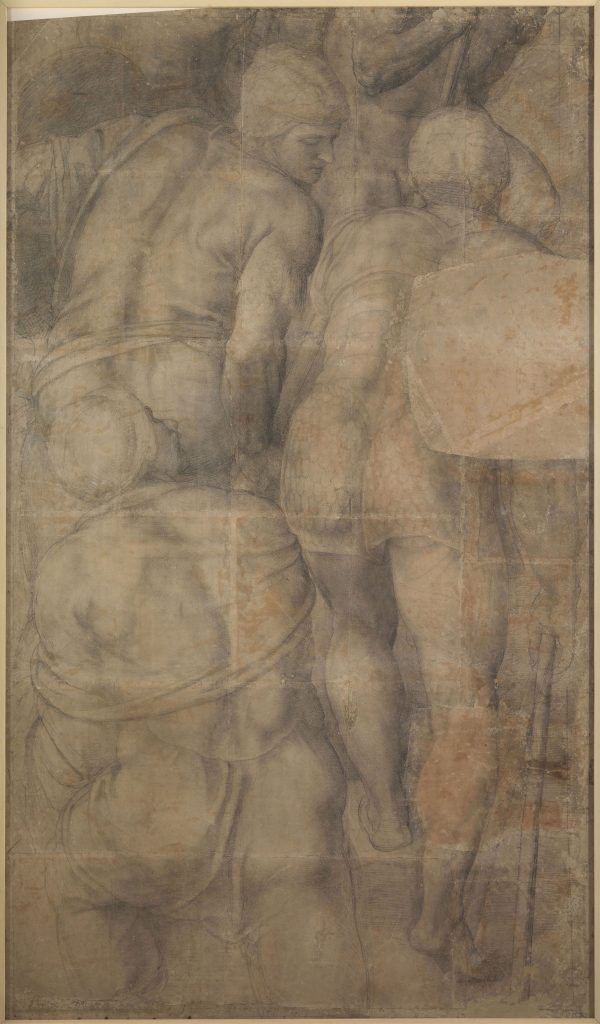
Michelangelo, Group of Soldiers (1546–50). Image: courtesy Capodimonte.
The Salle de la Chapelle takes a broader focus, staging a miscellany of wonders from Naples: an El Greco and a Titian here, a miniature Filippo Tagliolini sculpture and a gilded casket of silver and crystal there. It’s a space that shows the full diversity of the Capodimonte collection, largely courtesy of its Farnese and Bourbon families.
The two museums “are symbols of the historical links between France and Italy,” des Cars said in a statement. “This exceptional and unprecedented partnership is a perfect example of my vision for the Louvre’s future role in Europe and museums.”
See more images from “Naples in Paris” here:
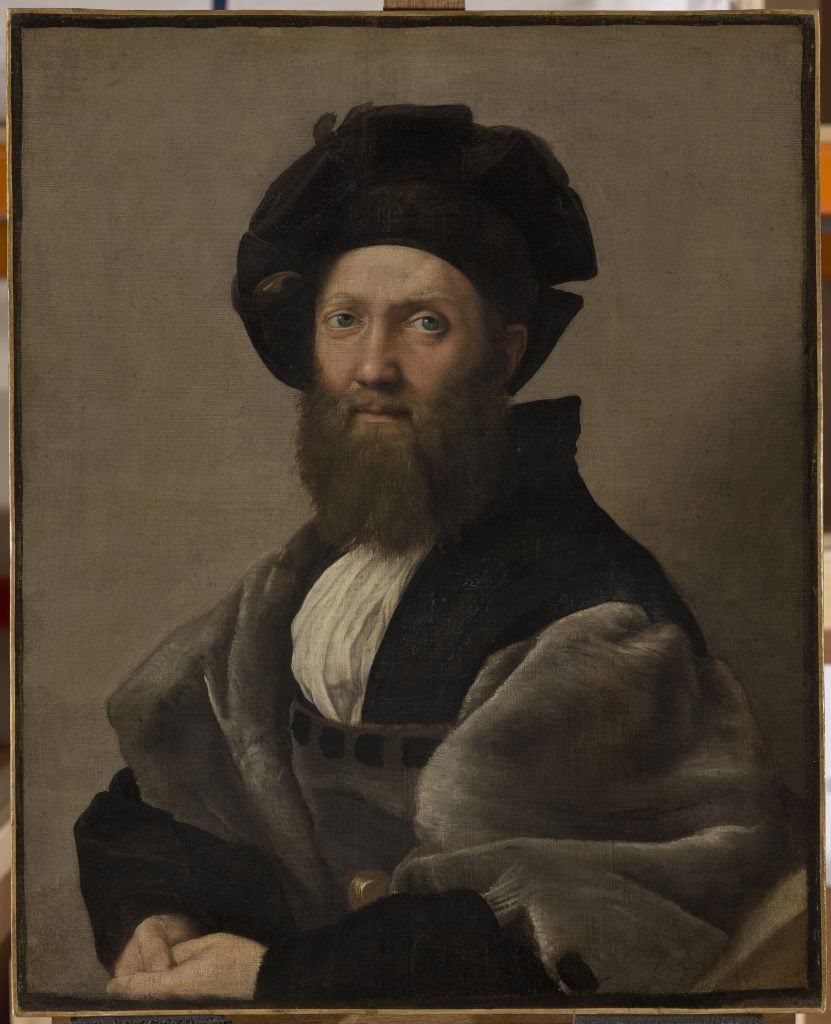
Raphael, Portrait of Baldassare Castiglione (1514–15). Image: courtesy The Louvre.
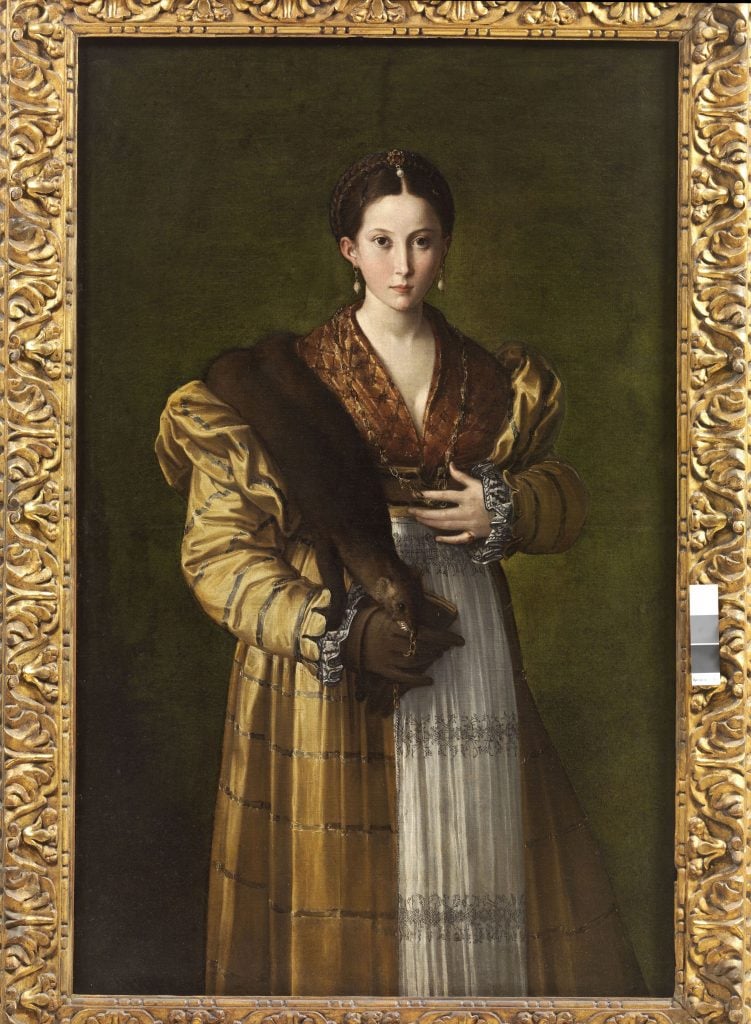
Parmigianino, Portrait of a Young Woman (Also known as Antea, c. 1535). Image: courtesy Capodimonte.
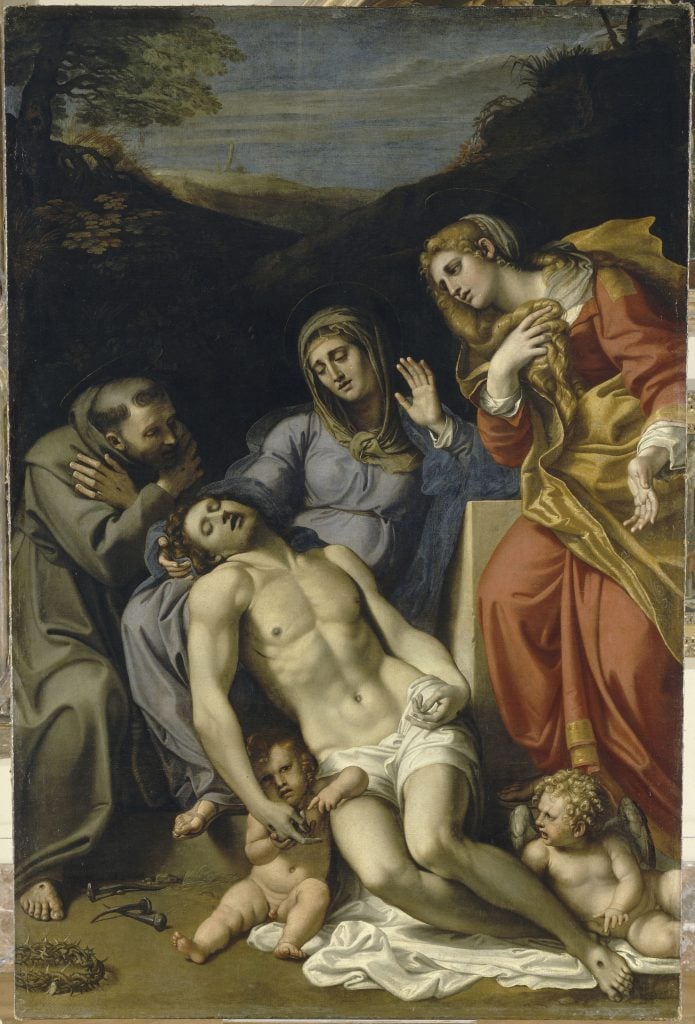
Annibale Carracci, Pietà with Saint Francis and Saint Mary Magdalene (1600–25). Image: courtesy the Louvre.
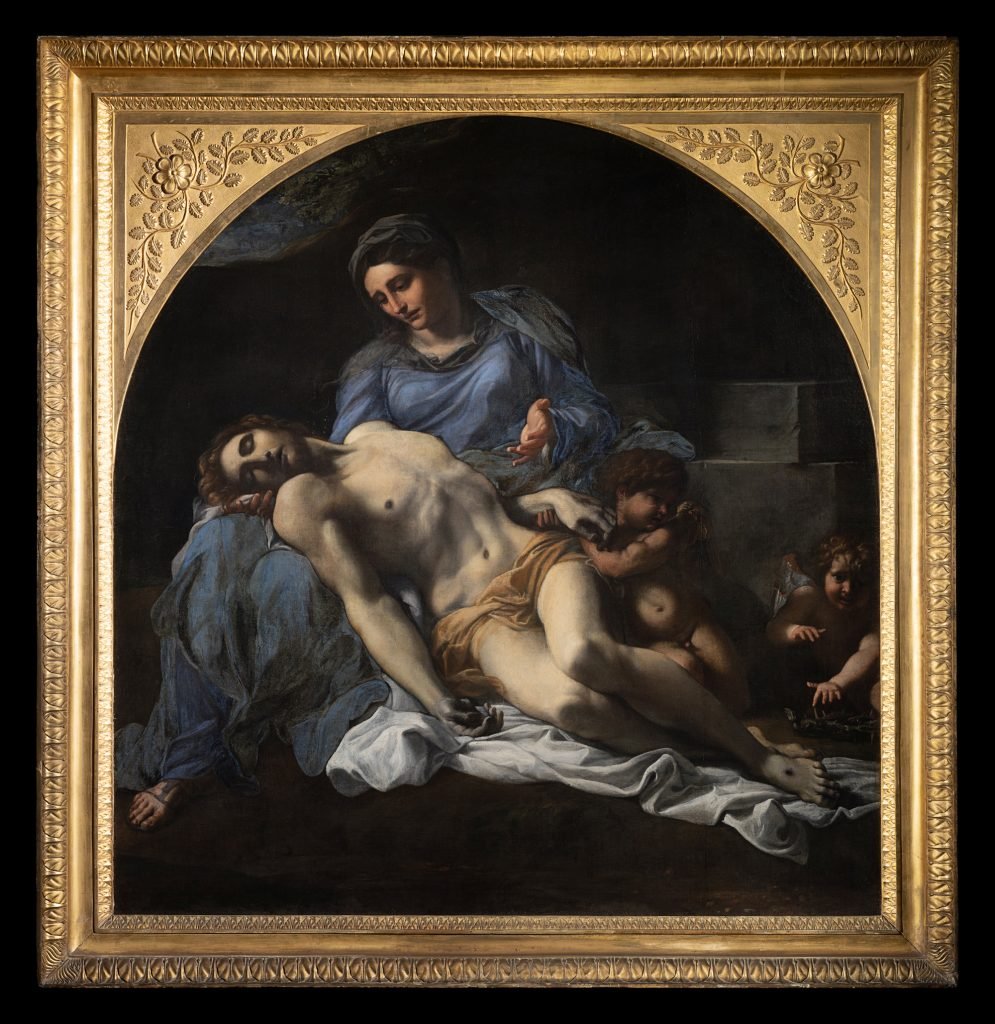
Annibale Carracci, Pietà (1599–1600). Image: courtesy Capodimonte.
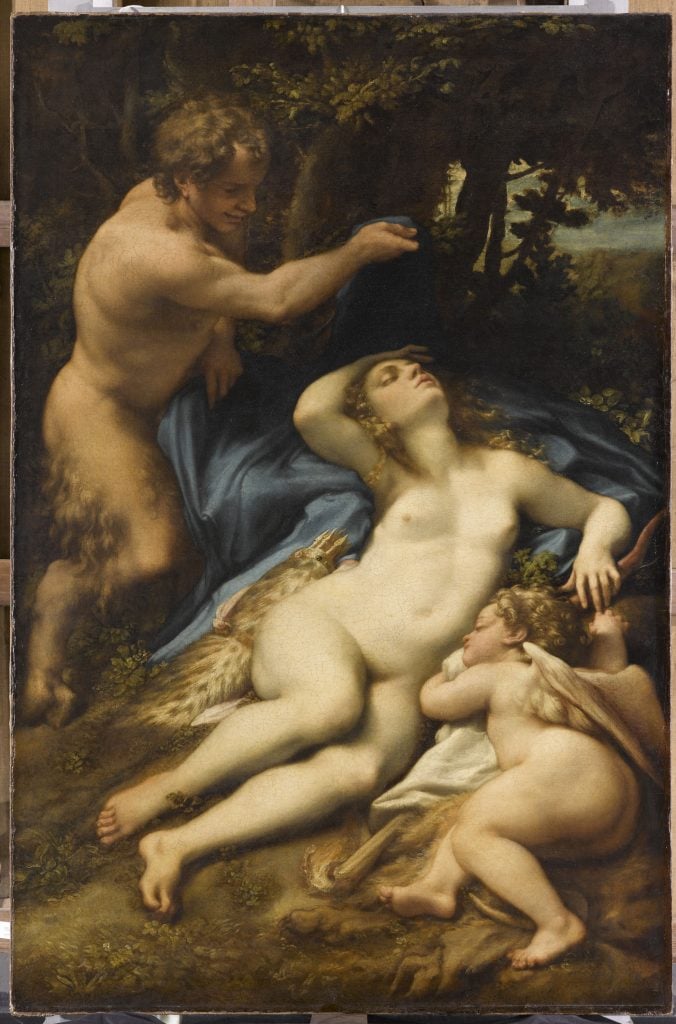
Correggio, Venus and Cupid with a Satyr (1524–27). Image: courtesy the Louvre.
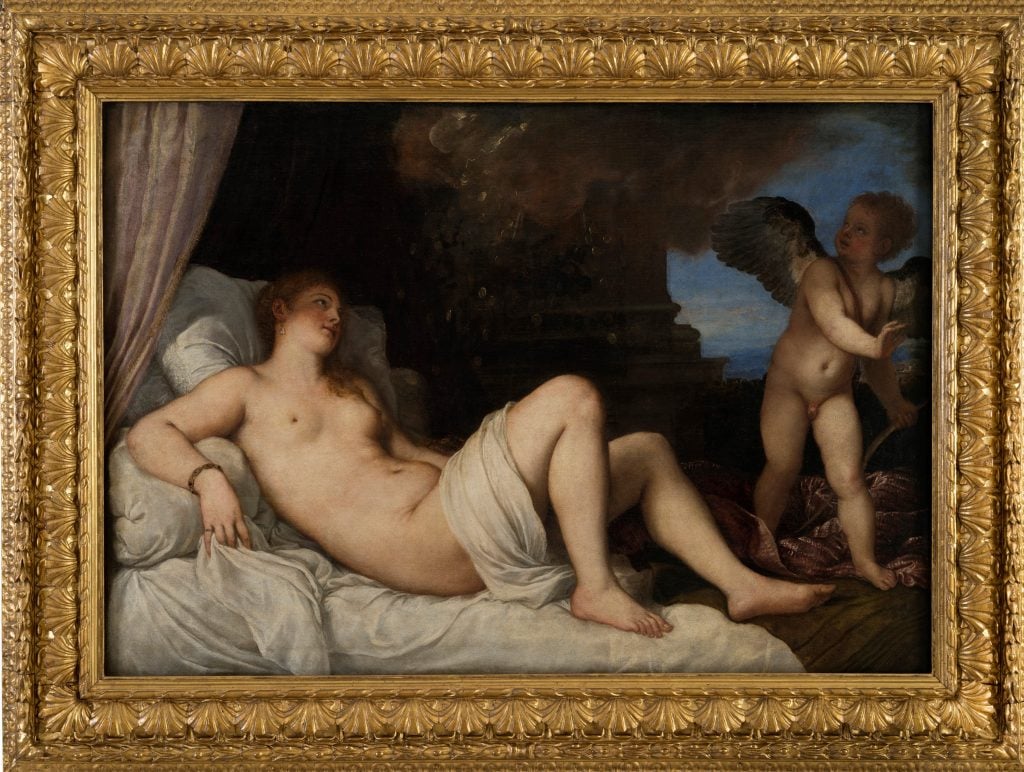
Titian, Danae (1544–45). Images: Capodimonte.

José de Ribera, The Clubfoot (1642). Image: courtesy the Louvre.
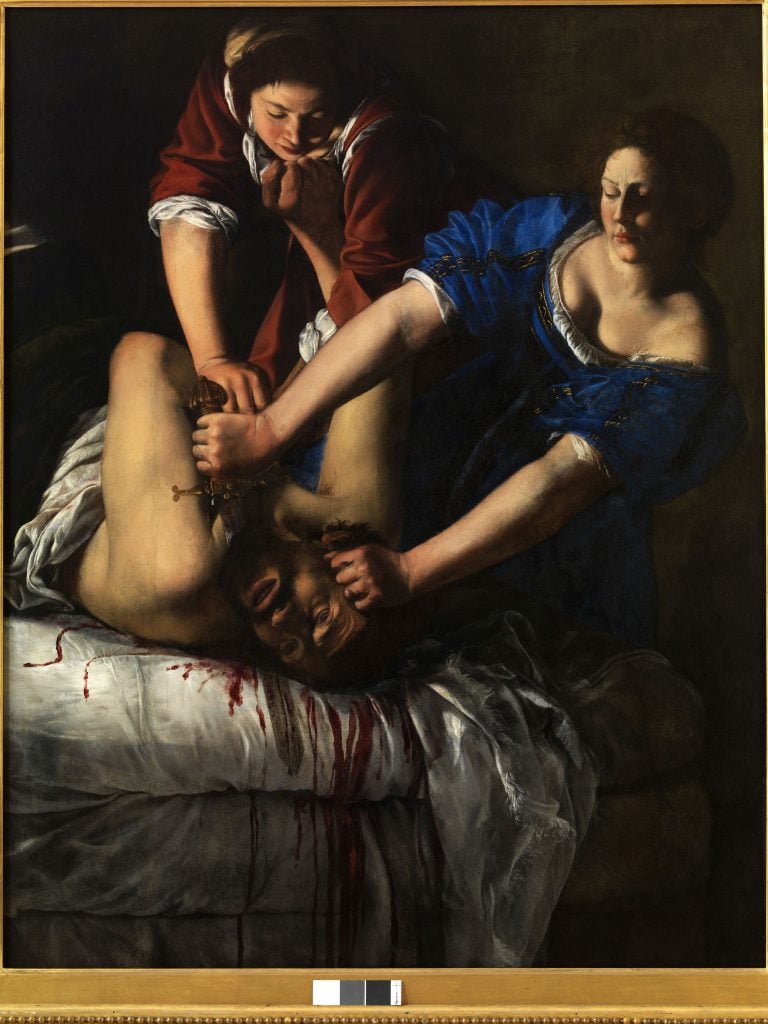
Artemisia Gentileschi, Judith Slaying Holofernes (c. 1612–13). Image: Capodimonte.

















